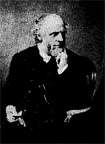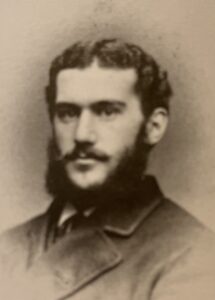 August 15. Architect and vestryman Arthur Rotch died of pleurisy at the age of 44. In 1892, he had moved to 82 Commonwealth Avenue with his bride Lisette DeWolf Colt. Son of Benjamin and Annie Rotch, founding members of Emmanuel, Arthur had graduated from Harvard College in 1871, studied architecture at MIT in 1872-3, and then gone to Paris to study at the Ecole des Beaux-Arts. In 1880, he joined George Tilden in designing houses at 197, 211, 215, 231 & 233 Commonwealth Avenue, among others. In 1886, with associate Ralph Adams Cram, they built Church of the Holy Spirit, Mattapan. In 1889, they designed a mission chapel for Emmanuel, which was never realized.
August 15. Architect and vestryman Arthur Rotch died of pleurisy at the age of 44. In 1892, he had moved to 82 Commonwealth Avenue with his bride Lisette DeWolf Colt. Son of Benjamin and Annie Rotch, founding members of Emmanuel, Arthur had graduated from Harvard College in 1871, studied architecture at MIT in 1872-3, and then gone to Paris to study at the Ecole des Beaux-Arts. In 1880, he joined George Tilden in designing houses at 197, 211, 215, 231 & 233 Commonwealth Avenue, among others. In 1886, with associate Ralph Adams Cram, they built Church of the Holy Spirit, Mattapan. In 1889, they designed a mission chapel for Emmanuel, which was never realized.
In 1886, Arthur became a member of the Corporation of MIT and served as chairman of its Department of Architecture until his death. Having with his sisters established in 1883 the Rotch Traveling Scholarship in memory of their father, he bequeathed funds for the Rotch Library at MIT. He was chairman of Harvard’s Visiting Committee of Fine Arts, founder of the Boston Architectural Club, trustee of the Museum of Fine Arts, and trustee and benefactor of the Mass. Eye & Ear Infirmary. Our Rotch Reredos was given by his sister Aimee Sargent in memory of him, their sister Edith. and their parents.
See also
- 1886 for Church of the Holy Spirit, Mattapan, which he designed.
- Wikipedia’s entry for Arthur & for a list of their works Rotch & Tilden
- Back Bay Houses for their works in the Back Bay
- Bainbridge Bunting‘s Houses of Boston’s Back Bay (Cambridge: Harvard U. Press, 1967) discusses several of their works in depth.
- A Continental Eye: The Art and Architecture of Arthur Rotch: the Catalogue of an Exhibition Held at the Boston Athenæum, December 10th, 1985, through January 24th, 1986, and at the Klimann Gallery of the MIT Museum, February 10th through April 5th, 1986, by Harry L. Katz and Richard Chafee.


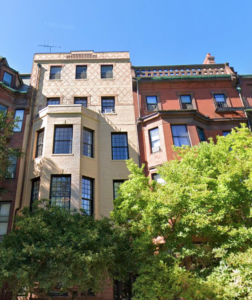
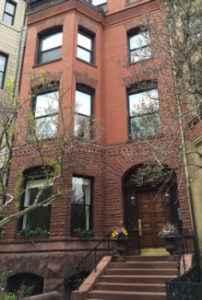
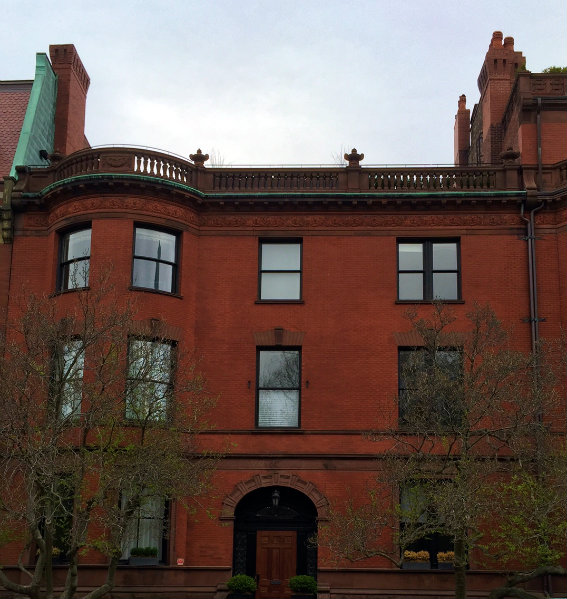
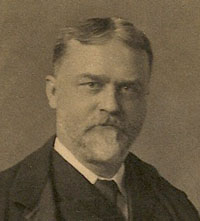
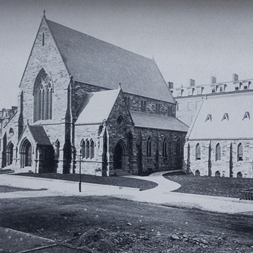
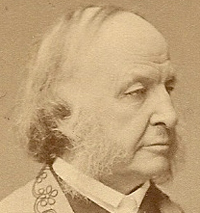
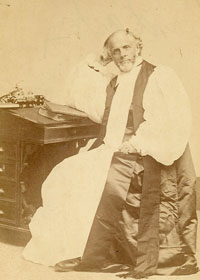 March 24. The Rev. Dr. Frederic Dan Huntington
March 24. The Rev. Dr. Frederic Dan Huntington 